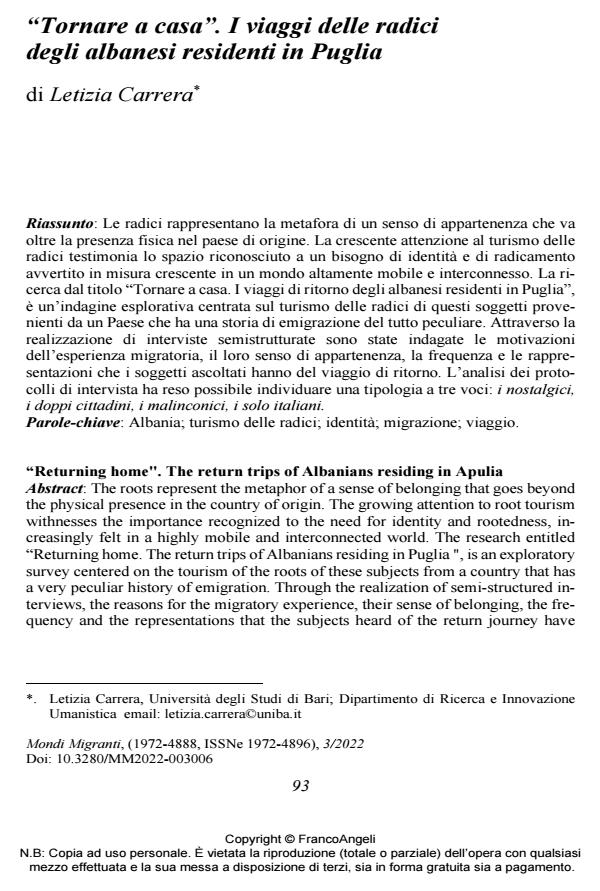"Returning home". The return trips of Albanians residing in Apulia
Journal title MONDI MIGRANTI
Author/s Letizia Carrera
Publishing Year 2022 Issue 2022/3
Language Italian Pages 22 P. 93-114 File size 160 KB
DOI 10.3280/MM2022-003006
DOI is like a bar code for intellectual property: to have more infomation
click here
Below, you can see the article first page
If you want to buy this article in PDF format, you can do it, following the instructions to buy download credits

FrancoAngeli is member of Publishers International Linking Association, Inc (PILA), a not-for-profit association which run the CrossRef service enabling links to and from online scholarly content.
The roots represent the metaphor of a sense of belonging that goes beyond the physical presence in the country of origin. The growing attention to root tourism withnesses the importance recognized to the need for identity and rootedness, in-creasingly felt in a highly mobile and interconnected world. The research entitled "Returning home. The return trips of Albanians residing in Puglia ", is an exploratory survey centered on the tourism of the roots of these subjects from a country that has a very peculiar history of emigration. Through the realization of semi-structured interviews, the reasons for the migratory experience, their sense of be-longing, the frequency and the representations that the subjects heard of the return journey have been investigated. The analysis of the interview protocols made it possible to identify a typology with three voices: nostalgics, double citizens, mel-ancholies, only Italians.
Keywords: Albania; roots tourism; identity; migration; journey.
Letizia Carrera, "Tornare a casa". I viaggi delle radici degli albanesi residenti in Puglia in "MONDI MIGRANTI" 3/2022, pp 93-114, DOI: 10.3280/MM2022-003006